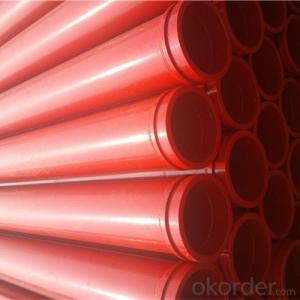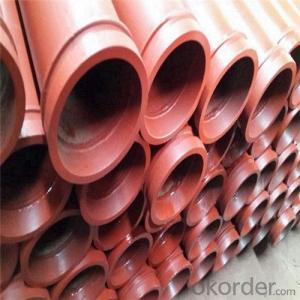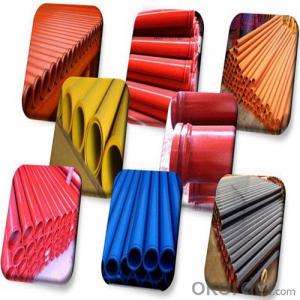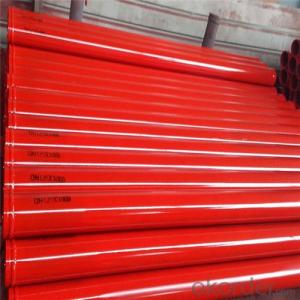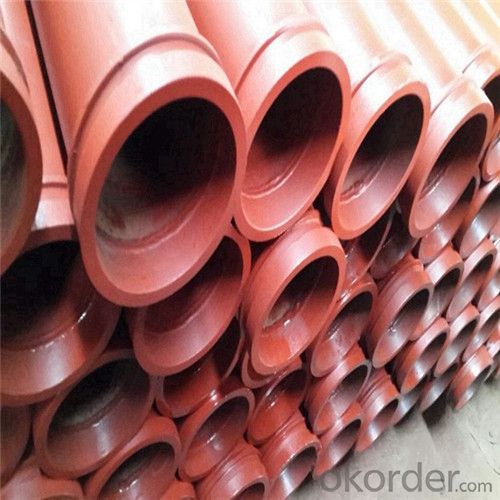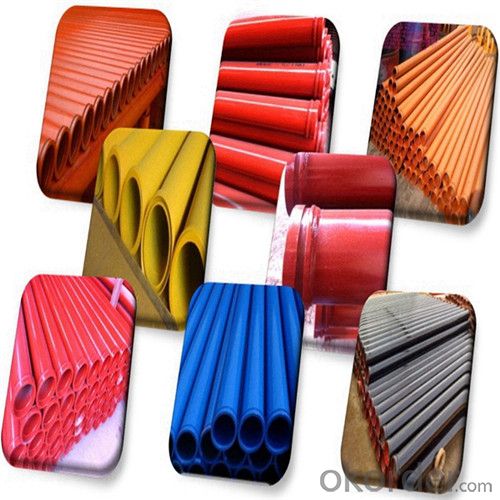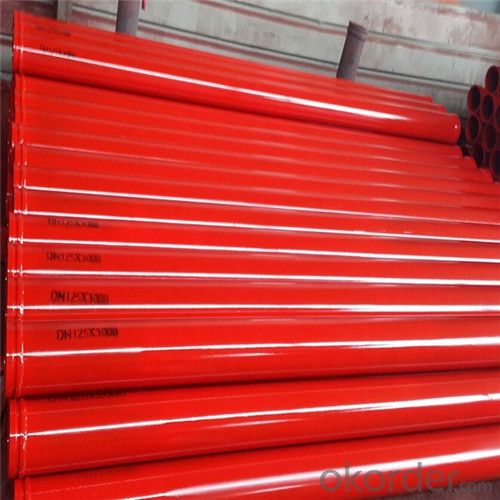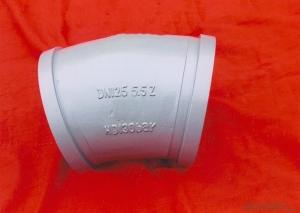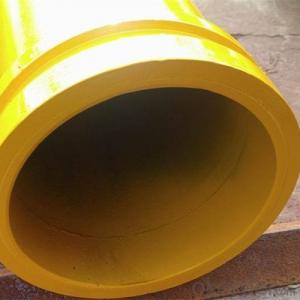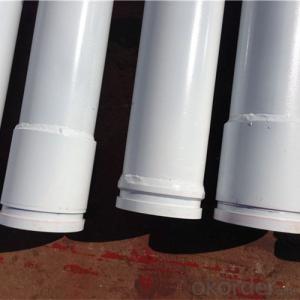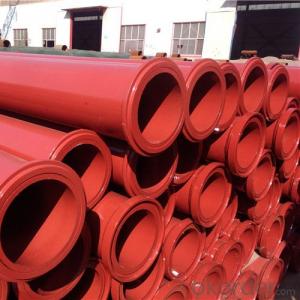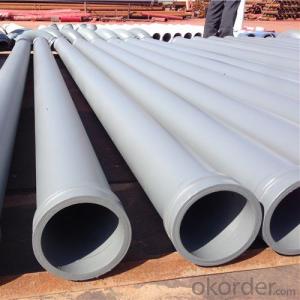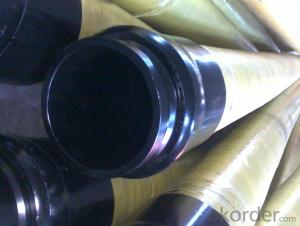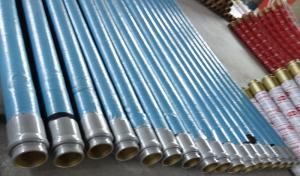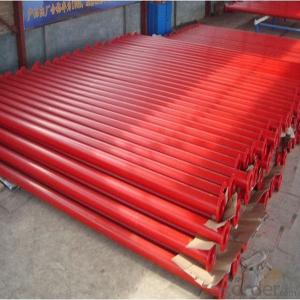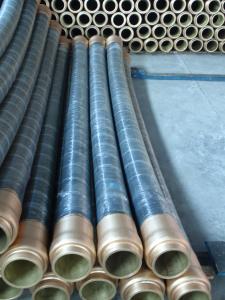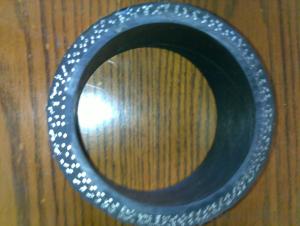3M Seamless Delivery Pipe for Concrete Pump Thickness 5.5mm
- Loading Port:
- Tianjin
- Payment Terms:
- TT or LC
- Min Order Qty:
- 50 pc
- Supply Capability:
- 5000 pc/month
OKorder Service Pledge
OKorder Financial Service
You Might Also Like
3M Seamless Delivery Pipe for Concrete Pump Thickness 5.5mm
1. Structure of 3M Seamless Delivery Pipe for Concrete Pump Thickness 5.5mm:
St52 Seamless Pipe: Now More People like use this kind for Truck Pump and Trailer Pump because of the quality is better and it is seamless kind, so this kind pipe is most popular in Middle East Price About 34USD-37USD.
2. Main Features of 3M Seamless Delivery Pipe for Concrete Pump Thickness 5.5mm:
• High Wear-resistant, long service life, lower cost
• In case of quality problem the company provide free replacement.
• Our company passed the ISO9000 certification, the product through 3C certification in full compliance with national standards
3. 3M Seamless Delivery Pipe for Concrete Pump Thickness 5.5mm Images
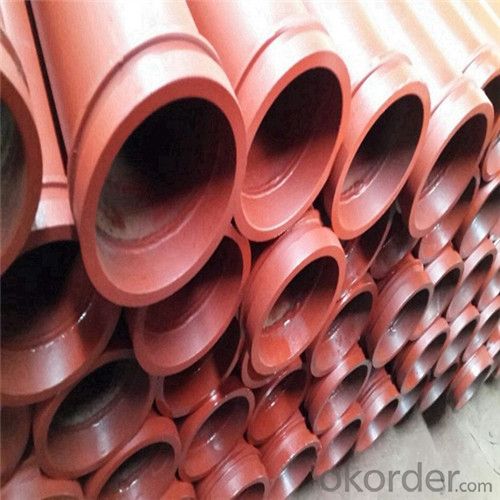
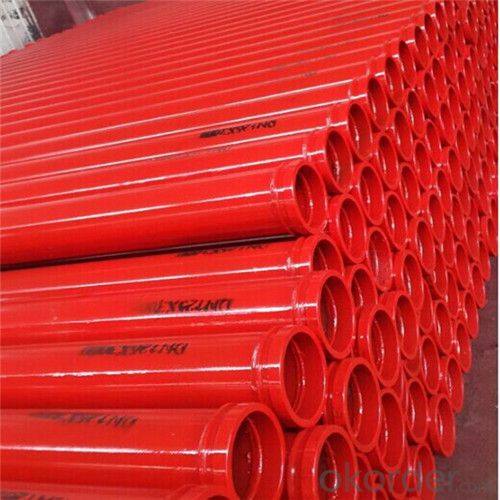
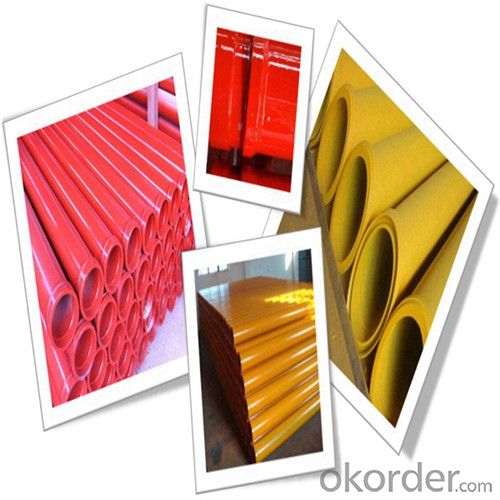
4. 3M Seamless Delivery Pipe for Concrete Pump Thickness 5.5mm Specification
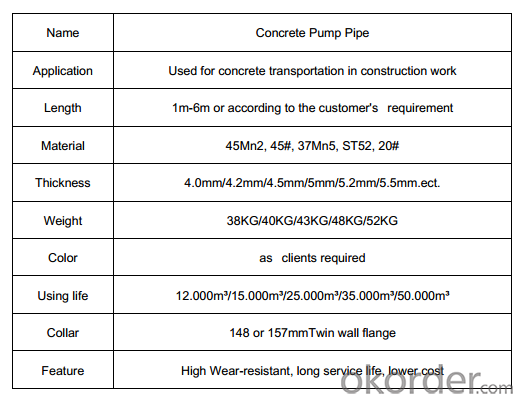
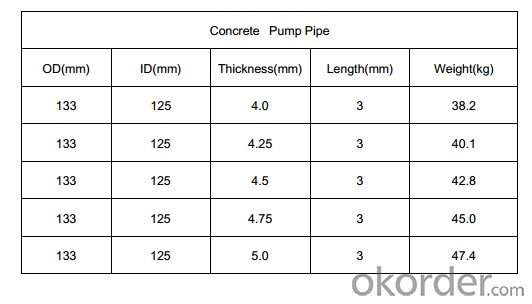
Production Process
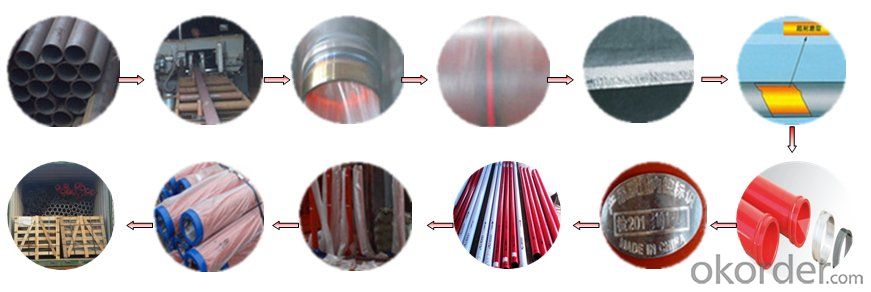
5. FAQ
We have organized several common questions for our clients, may help you sincerely:
①Is your products exported a lot?
We have exported to many, many countries. Every year we ship more than 30 containers of these spare parts. Our main market is in Middle-east, Asia & Africa.
②How to guarantee the quality of the products?
We have established the international advanced quality management system,every link from raw material to final product we have strict quality test;We resolutely put an end to unqualified products flowing into the market. At the same time, we will provide necessary follow-up service assurance.
③How long can we receive the product after purchase?
In the purchase of product within three working days, we will arrange the factory delivery as soon as possible. The specific time of receiving is related to the state and position of customers. Commonly 15 working days can be served.
- Q: How does a concrete pump agitator motor prevent concrete from settling?
- A concrete pump agitator motor prevents concrete from settling by continuously rotating and agitating the mixture, ensuring that the aggregate, cement, and water remain well-mixed. This agitation action prevents the heavier components from sinking and settling at the bottom, maintaining a homogeneous consistency throughout the concrete.
- Q: How can one identify the correct type of rubber seals or gaskets for concrete pump spare parts?
- To identify the correct type of rubber seals or gaskets for concrete pump spare parts, there are a few steps you can follow: 1. Consult the manufacturer's documentation: Check the concrete pump's manual or any accompanying documentation provided by the manufacturer. This information will usually specify the type and size of rubber seals or gaskets required for different parts of the pump. 2. Measure the dimensions: Take precise measurements of the seals or gaskets that need replacement. This includes the inner diameter, outer diameter, and thickness. These measurements will help you find the right size of seals or gaskets. 3. Material compatibility: Consider the material compatibility between the rubber seals or gaskets and the concrete being pumped. Concrete may contain chemicals or additives that can degrade certain types of rubber. Ensure that the seals or gaskets you choose are made of a material that is resistant to the specific chemicals present in the concrete. 4. Seek expert advice: If you are unsure about the specific type of rubber seal or gasket required for your concrete pump, it is always advisable to seek expert advice. Contact the manufacturer directly or consult a reputable supplier or distributor who specializes in concrete pump spare parts. They can provide guidance and recommend the correct type of seals or gaskets based on your specific pump model and requirements. Remember, using the correct type of rubber seals or gaskets is crucial for maintaining the efficiency and safety of your concrete pump. Taking the time to identify the right parts will help ensure optimal performance and minimize the risk of premature wear or failure.
- Q: How do I properly maintain and replace hydraulic cylinders in concrete pump spare parts?
- Proper maintenance and replacement of hydraulic cylinders in concrete pump spare parts requires a systematic approach. Firstly, regular inspections should be conducted to identify any signs of wear, leakage, or damage. It is important to clean the cylinders regularly to remove any debris or contaminants that can cause premature failure. To maintain the hydraulic cylinders, it is crucial to follow the manufacturer's recommendations for lubrication and fluid changes. Ensure that the hydraulic fluid levels are checked and maintained within the specified range. Additionally, monitor the pressure and temperature of the system to detect any abnormal conditions that may indicate a problem with the cylinders. When it comes to replacement, it is essential to use genuine and high-quality hydraulic cylinders that meet the specifications of the concrete pump. Consult the manufacturer's guidelines for the correct procedure for removing and installing the cylinders. Proper alignment and adjustment of the cylinders are crucial to ensure their optimal performance and longevity. In summary, proper maintenance involves regular inspections, cleaning, lubrication, and monitoring of the hydraulic system. Replacement should be done with genuine parts and following the manufacturer's guidelines. By following these steps, you can ensure the reliable and efficient operation of hydraulic cylinders in concrete pump spare parts.
- Q: What is the name of the pump for concrete transportation?
- Concrete pump truck is modified on truck chassis. It is equipped with motion and power transmission device, pumping and mixing device, cloth device and other auxiliary devices on the chassis.
- Q: What are the different types of concrete pump pistons?
- In the construction industry, various concrete pump pistons are frequently utilized. These encompass the following: 1. Single-acting pistons: Smaller concrete pumps employ these pistons with a single working side. They propel the concrete out of the cylinder during the forward stroke and rely on gravity to retract the piston during the return stroke. 2. Double-acting pistons: Larger concrete pumps utilize these pistons with two working sides. They push the concrete out during the forward stroke and pull it back during the return stroke, thereby enhancing the pumping process's efficiency. 3. S-tube pistons: Trailer-mounted concrete pumps commonly employ these pistons, which are shaped like an S. They assist in regulating the concrete flow by directing it through a series of valves and pipes. 4. Rock valve pistons: These pistons are specifically designed for pumping concrete with larger aggregates. With their sturdy design, they can handle the more abrasive nature of such materials. 5. Gate valve pistons: These pistons employ a gate valve system to manage the concrete flow. They are frequently used in high-pressure applications and provide precise control over the pumped concrete's quantity. In summary, the selection of a concrete pump piston depends on various factors specific to the construction project, including the pump's size, the type of concrete being pumped, and the desired flow rate and pressure.
- Q: What is the role of a concrete pump spectacle plate?
- The role of a concrete pump spectacle plate is to provide support and stability to the concrete pump's boom. It acts as a mounting base for the pipeline, allowing the pump to accurately and efficiently deliver concrete to the desired location.
- Q: How do I troubleshoot issues related to concrete pump spare parts control systems?
- To troubleshoot issues related to concrete pump spare parts control systems, you can follow these steps: 1. Start by checking the power supply and connections to ensure there are no loose or damaged wires. 2. Verify that the control system is properly calibrated and programmed according to the manufacturer's instructions. 3. Inspect the control panel for any visible signs of damage, such as burnt components or water ingress. 4. Use a multimeter to test the voltage and continuity of different control system components, such as sensors, switches, and relays. 5. Consult the system's user manual or contact the manufacturer for any specific troubleshooting steps or error code interpretations. 6. If the issue persists, consider contacting a professional technician or the manufacturer's customer support for further assistance.
- Q: Why would the plugging concrete pump pipe
- When it is found that a bucket of concrete slump is very small, can not pump, should be in time the concrete from the bottom of the hopper release, if seeking trouble, forced pumping, easy to cause blockage. Avoid stirring with water in the hopper
- Q: What are the precautions for gas washing of concrete pump?
- If it is found that the wash is not moving, it should first close the intake valve, and then slowly open the exhaust valve bleeding, and then try to segment cleaning.
- Q: How can a faulty oil cooler affect the pump's hydraulic system?
- A faulty oil cooler can affect the pump's hydraulic system in several ways. Firstly, the oil cooler is responsible for maintaining the optimal temperature of the hydraulic oil. If the oil cooler is faulty and fails to cool the oil effectively, the hydraulic oil may overheat. This can lead to a decrease in the oil's viscosity, causing it to lose its lubricating properties. As a result, the pump's moving parts may experience increased friction and wear, leading to reduced efficiency and potentially causing damage to the pump itself. Secondly, a faulty oil cooler may result in inadequate cooling of the hydraulic oil, leading to elevated temperatures within the system. High temperatures can cause the oil to oxidize, resulting in the formation of sludge and varnish deposits. These deposits can clog the hydraulic system, including the pump, valves, and other components, impeding their smooth operation and potentially causing them to malfunction. Additionally, a faulty oil cooler may also lead to a decrease in oil flow rate. If the oil cooler is not functioning properly, it may restrict the flow of hydraulic oil, reducing the amount of oil available for the pump's operation. This can result in decreased hydraulic pressure, affecting the pump's performance and potentially leading to issues such as reduced power output or inadequate operation of hydraulic actuators. Overall, a faulty oil cooler can negatively impact the pump's hydraulic system by causing overheating, increased friction and wear, the formation of deposits, and reduced oil flow rate. It is crucial to regularly inspect and maintain the oil cooler to ensure its proper functioning and prevent any potential damage to the hydraulic system.
Send your message to us
3M Seamless Delivery Pipe for Concrete Pump Thickness 5.5mm
- Loading Port:
- Tianjin
- Payment Terms:
- TT or LC
- Min Order Qty:
- 50 pc
- Supply Capability:
- 5000 pc/month
OKorder Service Pledge
OKorder Financial Service
Similar products
Hot products
Hot Searches
Related keywords
